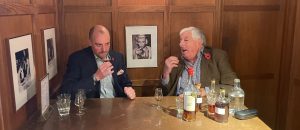National Cognac Day – Saturday 4th June 2022
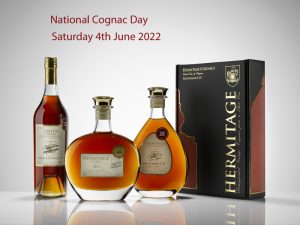 National Cognac Day on June 4th invites you to enjoy one of the finest alcoholic drinks available. Cognac, which originates from a town of the same name in France, is a type of brandy enjoyed because of its distilled and fine taste. Cognac begins as a white wine that has been produced in one of six designated growing regions. This definition explains the axiom ‘ all cognac is brandy but not all brandy is cognac’. Ironically, the white wine from which cognac starts, is considered by most wine connoisseurs to be entirely undrinkable. But once it has been distilled in an alembic still and aged in oak casks for years, it is absolutely delicious.
National Cognac Day on June 4th invites you to enjoy one of the finest alcoholic drinks available. Cognac, which originates from a town of the same name in France, is a type of brandy enjoyed because of its distilled and fine taste. Cognac begins as a white wine that has been produced in one of six designated growing regions. This definition explains the axiom ‘ all cognac is brandy but not all brandy is cognac’. Ironically, the white wine from which cognac starts, is considered by most wine connoisseurs to be entirely undrinkable. But once it has been distilled in an alembic still and aged in oak casks for years, it is absolutely delicious.
Cognac comes in multiple grades and exploring them can be a great way to spend National Cognac Day. At the entry level cognac is great for making cocktails such as the Sidecar or French Connection. At the other end of the spectrum, single estate, unblended, vintage cognacs should be savoured, every sip enjoyed for its individuality and complex flavours. Hermitage specialise in producing cognacs with numbers on the bottles so you know exactly what you’re buying and each one is unique. National Cognac Day is the perfect opportunity to get to know one of the world’s most premium drinks.

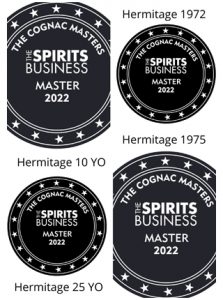 We are thrilled to announce that the Cognac Masters 2022 results have just been released and it was an exceptional medal haul for
We are thrilled to announce that the Cognac Masters 2022 results have just been released and it was an exceptional medal haul for 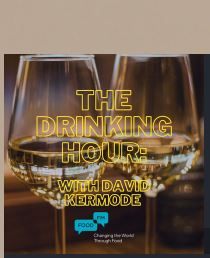 Another mention for David Baker and Hermitage Cognacs, including Hermitage 1972, on David Kermode’s podcast, The Drinking Hour. In Episode 54 David interviews Joel Harrison, IWSC judge and writer, about cognac, how it’s made and the production situation. About 35 minutes in, Joel refers to our very own David Baker as “the Indiana Jones of Cognac” and of
Another mention for David Baker and Hermitage Cognacs, including Hermitage 1972, on David Kermode’s podcast, The Drinking Hour. In Episode 54 David interviews Joel Harrison, IWSC judge and writer, about cognac, how it’s made and the production situation. About 35 minutes in, Joel refers to our very own David Baker as “the Indiana Jones of Cognac” and of 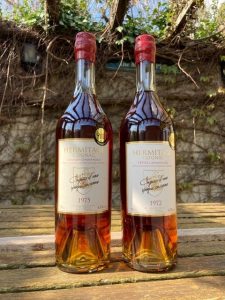 We have recently added two new, exciting releases to our Hermitage Cognac stable, both distilled over 50 years ago.
We have recently added two new, exciting releases to our Hermitage Cognac stable, both distilled over 50 years ago.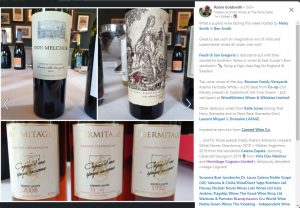 Thanks to Robin Goldsmith, freelance drinks writer at The Write Taste, for reviewing our Hermitage Cognacs as “deliciously decadent vintage Cognacs”. The cognacs that Robin tasted are three of which we are particularly proud:
Thanks to Robin Goldsmith, freelance drinks writer at The Write Taste, for reviewing our Hermitage Cognacs as “deliciously decadent vintage Cognacs”. The cognacs that Robin tasted are three of which we are particularly proud: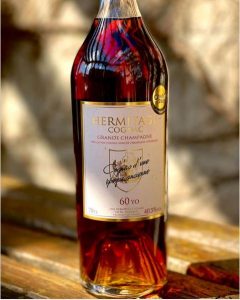 Our Hermitage 60 Year Old Grande Champagne Cognac has always been popular, not just for its stunning flavours, but because it it the perfect gift for those born in 1962 or with a 60th anniversary this year.
Our Hermitage 60 Year Old Grande Champagne Cognac has always been popular, not just for its stunning flavours, but because it it the perfect gift for those born in 1962 or with a 60th anniversary this year.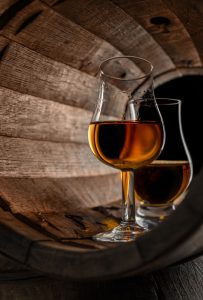 The premium drinks market is seeing a significant rise in demand as the worst effects of the pandemic subside. The BNIC has just released figures that show a 31% increase in cognac exports by value, equating to an increase of 16% by volume. These rises also compare favourably to the pre-pandemic demand in 2019. “This growth reflects a real recovery of cognac, as well as new consumption habits,” the BNIC said. Sales to the spirit’s largest market, the United States, climbed 11 %, sales to China, its second biggest, leapt 56 % whilst European sales were up 8%. Cognac sales are also growing in newer markets, particularly South Africa and Nigeria.
The premium drinks market is seeing a significant rise in demand as the worst effects of the pandemic subside. The BNIC has just released figures that show a 31% increase in cognac exports by value, equating to an increase of 16% by volume. These rises also compare favourably to the pre-pandemic demand in 2019. “This growth reflects a real recovery of cognac, as well as new consumption habits,” the BNIC said. Sales to the spirit’s largest market, the United States, climbed 11 %, sales to China, its second biggest, leapt 56 % whilst European sales were up 8%. Cognac sales are also growing in newer markets, particularly South Africa and Nigeria. We are delighted to report that we had even more coverage on Radio Wiltshire last month, featuring on the Christmas Eve Breakfast Show.
We are delighted to report that we had even more coverage on Radio Wiltshire last month, featuring on the Christmas Eve Breakfast Show. f you’re looking for Christmas Suggestions you will have found two recommendations for Hermitage Cognacs in the press last week. Olly Smith, well known wines and spirits journalist and television presenter featured our
f you’re looking for Christmas Suggestions you will have found two recommendations for Hermitage Cognacs in the press last week. Olly Smith, well known wines and spirits journalist and television presenter featured our 